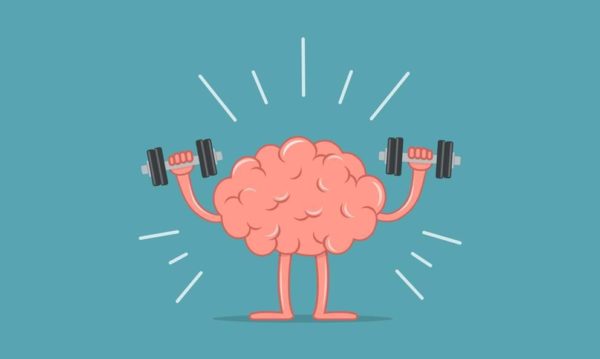
Is there a connection between exercise and mental health? Research has continually shown that regular exercise can help improve your heart health, digestion, sleep, mood, mental state, and so much more. Intuitively we know that moving our bodies is beneficial and contributes to an overall sense of well-being. Recently, mental health has moved to the forefront of research due to the changes in our routines and daily life as a result of the pandemic. As many of us suspected, there is a direct connection between how physically active we are and the state of our mental health.
What Does “Wellness” Really Mean?
In recent years wellness has become a very trendy word, but what does it really mean? The fact is that there are 8 different wellness domains, and they include the following:
- Nutritional
- Physical
- Occupational
- Environmental
- Financial
- Social and emotional
- Spiritual
- Intellectual
The term wellness is a general compilation of all the above domains. It is natural for some domains to be more balanced or more of a priority at certain times. Generally, we are all aiming for a good sense of equilibrium in all the above areas. In addition, many of the different domains of wellness play into each other. There is an especially close connection between exercise and mental health also referred to as social/emotional wellness and physical wellness.
According to the National Institutes of Health, emotional wellness is defined as, “having rich and meaningful connections with people in our lives, creating a support system, and being self-aware enough to comfortably accept life’s challenges while maintaining a positive perspective.” In addition to exercise and mental health, they also recommend other strategies to maintain good emotional health.
6 Strategies to Supplement Exercise and Mental Health
1. Brighten your outlook – resilience is the ability to recover from difficult times and focus on the positive
2. Reduce stress – stress is something that we all deal with from time to time, it is not necessarily a negative thing as sometimes we need a rush of stress to accomplish a task; issues arise when we are in a heightened stressful state most of the timea. Being able to cope with stress can improve your resilience
3. Cope with loss – loss is a natural part of life; it is important to give yourself time to grieve and recover
4. Get quality sleep – we tend to sacrifice sleep when life gets busy, but we function better physically and mentally when we regularly get good, restful sleep
5. Strengthen social connections – having a strong support system can help us navigate stressful times, loss, and major life changes
6. Be mindful – mindfulness encourages us to be completely in the present moment, it allows us to take in the beauty around us and appreciate the little things
What is “Physical Wellness”?
Physical wellness is defined as, “the adoption of healthy physical habits such as exercise and plentiful sleep, and the avoidance of unhealthy activities such as smoking and consuming an unhealthy diet.” Physical wellness encompasses more than just exercise, in fact physical activity guidelines advocate for moderate or vigorous weekly activity but this does not have to mean going to a gym or lifting weights. The graphics below outline how much physical activity you should aim for each week.




Here are some examples of moderate intensity activity: brisk walking, heavy cleaning, mowing, ballroom dancing, golf, volleyball
And vigorous intensity: jogging/running, hiking steep grades, shoveling, or digging, swimming, playing tennis, cycling
4 ways that exercise and mental health are positively impacted
- 1. Endorphin release
Exercise is proven to trigger the release of endorphins which are ‘feel good’ hormones. Structurally, they are like morphine. Endorphins are made in the brain and bind to opiate receptors to block pain signals. Pain medications bind to these same receptors. Endorphins function by decreasing our perception of pain and can lead to feelings of euphoria and well-being. Recent research has shown that exercising at a high intensity leads to increased release of endorphins.
- 2. Combats fatigue and boosts energy
Regular exercise can help increase lung and aerobic capacity, so the body is able to deliver more oxygen to the brain, bloodstream, and muscles. And more oxygen means more energy! In addition, the more you move and exercise the more mitochondria your body makes. Mitochondria are the energy producing organs in all cells. More mitochondria also mean more energy!
- 3. Helps deal with stress and anxiety
As mentioned earlier, exercise can help release endorphins which contribute to feelings of well-being. Vigorous exercise has been shown to improve symptoms of depression for up to 4 hours after exercise. Physical activity can also help take your mind off stressful situations or worries. In that same vein, exercise can be a positive coping strategy for dealing with stress. If you start to feel yourself getting overwhelmed with worry, anxiety, or stress try turning to exercise to distract your mind. Research has also shown that regular moderate aerobic activity improves sleep quality and can help you fall asleep faster. Sleeping well can help manage chronic stress and anxiety as it nourishes and restores our bodies and minds.
- 4. Boosts cognition and memory
Regular physical activity has been shown to:
- Increase the size of the hippocampus in the brain which is the part of the brain involved with learning and long-term memory
- Stimulate the release of chemicals in the brain that keep brain cells healthy and alive longer
- Increase the size of the prefrontal cortex which is the area of the brain that controls thinking, decision making, and short-term memory
Exercise can also contribute to the brain and cognitive reserves, which are protections over the anatomy and nerve connections of the brain. As we age, these protections start to deteriorate which can result in memory difficulties, cognitive decline, and dementia in older adults. The more active we are, the more protection we have over the size and amount of our brain cells and the strength of our nerve connections. This helps us stay sharp and focused as we age.
In summary, wellness is multi-faceted and includes many different areas. All domains of wellness are related in some way; you may find that as you focus more on one area other areas will start to improve as well. Exercise and mental health are incredibly important to overall well-being and health. If you are hesitant to start an exercise routine or become more physically active, you can always consult with a physiatrist first and/or begin a structured physical therapy regimen to make sure your body is healthy and injury-free before becoming more active. We offer both of those services here at CHARM.
https://charmaustin.com/relieve-pain-and-repair-injury/
https://charmaustin.com/restore-function-and-return-to-living/

Check out some of our other blog articles featuring Exercise and Mental Health:
- https://charmaustin.com/swimming-is-the-complete-exercise/
- https://charmaustin.com/mental-health-through-movement-d43/
- https://charmaustin.com/stretching-the-forgotten-exercise/
Sources:
- Emotional wellness toolkit. National Institutes of Health. https://www.nih.gov/health-information/emotional-wellness-toolkit.
- Move your way factsheet. Department of Health and Human Services.
- Whiteman H. Endorphin release differs by exercise intensity, study finds. Medical News Today. https://www.medicalnewstoday.com/articles/319157.php. Published August 26, 2017.
- 7 great reasons why exercise matters. Mayo Clinic. https://www.mayoclinic.org/healthy-lifestyle/fitness/in-depth/exercise/art-20048389. Published May 11, 2019.
- Webb M. Increase Energy Levels and Cure Fatigue Through Exercise. ACE. https://www.acefitness.org/education-and-resources/lifestyle/blog/6589/increase-energy-levels-and-cure-fatigue-through-exercise. Published September 8, 2011.
- Breus M. The Benefits of Exercise For Sleep. Your Guide to Better Sleep. https://thesleepdoctor.com/2017/05/22/benefits-exercise-sleep/. Published January 29, 2018.
- Godman H. Regular exercise changes the brain to improve memory, thinking skills. Harvard Health Blog. https://www.health.harvard.edu/blog/regular-exercise-changes-brain-improve-memory-thinking-skills-201404097110. Published April 5, 2018.
- Mandolesi L, Polverino A, Montuori S, et al. Effects of Physical Exercise on Cognitive Functioning and Wellbeing: Biological and Psychological Benefits. Frontiers in Psychology. 2018;9. doi:10.3389/fpsyg.2018.00509.
- Zamani Sani SH, Fathirezaie Z, Brand S, et al. Physical activity and self-esteem: testing direct and indirect relationships associated with psychological and physical mechanisms. Neuropsychiatr Dis Treat. 2016;12:2617–2625. Published 2016 Oct 12. doi:10.2147/NDT.S116811
- What Are the Social and Emotional Benefits of Physical Activity? League Network, PBC. https://www.leaguenetwork.com/5449-2/. Published October 31, 2017.
- Exercise for Stress and Anxiety. Anxiety and Depression Association of America, ADAA. https://adaa.org/living-with-anxiety/managing-anxiety/exercise-stress-and-anxiety.
- Depression and anxiety: Exercise eases symptoms. Mayo Clinic. https://www.mayoclinic.org/diseases-conditions/depression/in-depth/depression-and-exercise/art-20046495. Published September 27, 2017.




